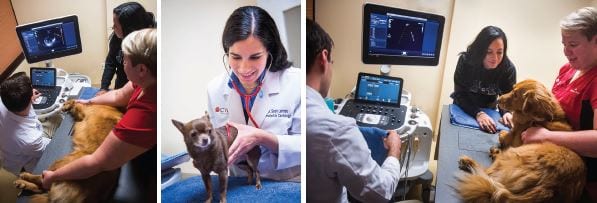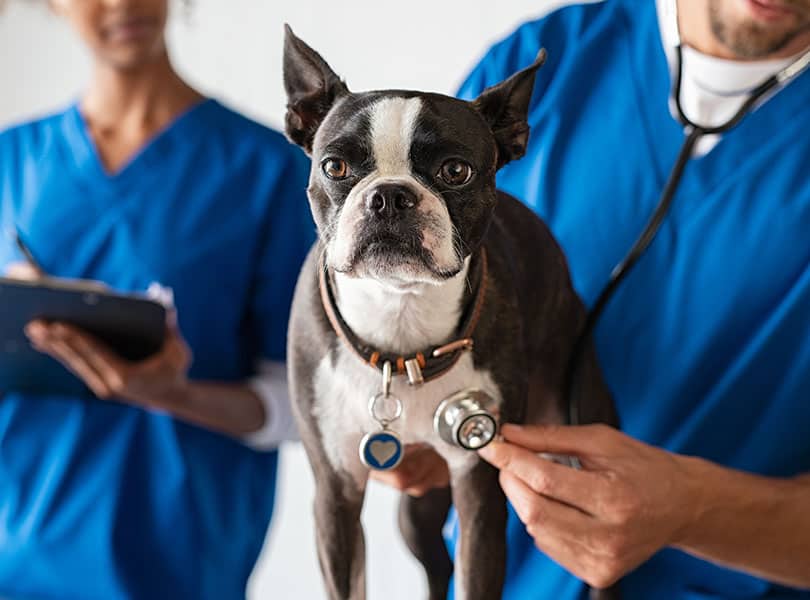What You Required to Find Out About Veterinary Providers: A Summary of Diagnostic Devices and Procedures
Veterinary solutions play a crucial role in keeping the health and wellness of animals. Normal examinations can reveal surprise health and wellness problems early. Different diagnostic devices and procedures, such as blood examinations and imaging techniques, give necessary insights right into an animal's health. Comprehending these methods is crucial for pet proprietors. What particular analysis procedures are most generally used, and just how can they influence an animal's treatment strategy?
Relevance of Routine Vet Check-Ups
While several pet proprietors might take too lightly the significance of normal vet exams, these consultations are essential for maintaining a pet's general wellness. Regular visits to the veterinarian enable for very early discovery of prospective wellness concerns prior to they escalate into serious problems. Regular examinations usually consist of vaccinations, which are essential for stopping transmittable conditions that can severely impact a pet's well-being. Additionally, these appointments provide an opportunity for veterinarians to assess the animal's weight, oral health, and total condition, guaranteeing that the animal is prospering. Throughout these brows through, animal owners can additionally obtain useful recommendations on diet, workout, and preventive care tailored to their certain animal's needs.
Common Analysis Procedures in Veterinary Medicine
In veterinary medication, precise diagnosis is vital for reliable therapy. Typical analysis procedures include blood testing methods, advanced imaging innovations, and urinalysis, each playing a substantial duty in recognizing wellness concerns. Recognizing these techniques improves the ability to give proper take care of animal patients.
Blood Examining Methods
Blood screening methods work as important analysis tools in vet medicine, making it possible for vets to evaluate the wellness of animals accurately. These strategies entail accumulating blood examples to examine different elements, such as white and red blood cells, platelets, and biochemical markers. Usual tests include full blood matters (CBC), which examine overall wellness and find infections, and biochemical panels, which analyze organ feature and metabolic standing. Furthermore, serological tests can determine particular diseases with antibody detection. Blood screening is minimally intrusive and provides critical info that aids in diagnosing problems, checking health status, and examining feedbacks to therapies. Overall, these strategies play a crucial function in making certain optimal look after pets and animals alike.
Imaging Technologies Utilized
Diagnostic imaging technologies are essential devices in vet medicine, complementing blood testing techniques by offering visual insights right into a pet's inner frameworks. Usual imaging methods consist of X-rays, which serve for examining bone cracks and spotting foreign things, and ultrasound, which permits real-time visualization of soft tissues and organs. Magnetic vibration imaging (MRI) offers in-depth photos of complex anatomical locations, especially in neurological analyses. Computed tomography (CT) offers cross-sectional photos, improving diagnostic accuracy for numerous problems. Each of these modern technologies help vets in identifying diseases, planning treatments, and keeping track of recovery. By incorporating imaging modern technologies, vet professionals can better analyze a pet's health and wellness and make informed choices concerning their care.
Urinalysis and Diagnostics
Urinalysis acts as a crucial diagnostic device in veterinary medication, giving beneficial understandings into a pet's total wellness and aiding in the detection of numerous problems. This non-invasive treatment analyzes pee samples to assess kidney feature, hydration status, and metabolic problems. Usual components checked out consist of specific gravity, pH degrees, sugar, proteins, and the presence of blood or germs. Abnormal searchings for can indicate problems such as urinary tract infections, diabetic issues mellitus, or kidney illness. To enhance analysis precision, urinalysis is commonly carried out combined with other examinations, such as blood work and imaging researches. Early detection via urinalysis can lead to prompt treatments, enhancing the prognosis for numerous vet clients. It is a crucial element of extensive vet care.
Understanding Blood Examinations and Lab Evaluation
Comprehending blood tests and research laboratory analysis is essential in veterinary medication as it helps in diagnosing different wellness conditions in pets. Different sorts of blood examinations supply essential details about a pet's internal state, while interpreting laboratory results calls for careful factor to consider of numerous elements. This section will check out the kinds of blood tests available and the relevance of their outcomes.
Kinds of Blood Examinations
Blood tests play a crucial duty in vet medication, supplying essential insights right into a pet's wellness standing. Numerous sorts of blood examinations are made use of, each offering various objectives. Full blood counts (CBC) assess general health and wellness and identify problems such as anemia or infection. Biochemical accounts assess body organ feature by measuring electrolytes and enzymes, supplying understandings right into metabolic health. Serological examinations recognize particular antibodies or microorganisms, aiding in the diagnosis of infections or autoimmune diseases. Blood typing guarantees safe transfusions, while coagulation tests evaluate the blood's ability to embolisms, essential for procedures. These tests collectively enhance medical diagnosis, therapy preparation, and surveillance of a pet's wellness, highlighting the value of detailed research laboratory analysis in veterinary treatment.

Translating Laboratory Results
An extensive analysis of lab outcomes is crucial for precise diagnosis and treatment in vet medicine. Translating laboratory results needs an understanding of regular referral ranges and the importance of variances. Blood examinations can disclose numerous wellness indications, such as body organ feature, electrolyte equilibrium, and the presence of infections. Vets have to take into consideration the entire medical photo, consisting of the animal's background, physical exam searchings for, and any kind of signs presented. Variations in results may develop from aspects such as age, breed, and underlying health and wellness problems. Consequently, lab outcomes need to not be viewed in seclusion yet rather as component of a comprehensive diagnostic strategy. Exact analysis permits tailored therapy strategies and far better end results for veterinary clients.
Imaging Techniques: X-rays, Ultrasounds, and Beyond
Imaging techniques are important devices in vet medicine, giving important insights right into the wellness and wellness of animals. Amongst the most commonly made use of techniques are X-rays and ultrasounds. X-rays are important for visualizing bone frameworks, assisting veterinarians recognize fractures, tumors, or international items. This method is quick and non-invasive, making it ideal for urgent situations.Ultrasounds, on the various other hand, use acoustic waves to create photos of soft tissues and body organs. This technique is specifically helpful for examining the heart, abdominal area, and reproductive body organs, enabling vets to evaluate problems like fluid accumulation or body organ abnormalities.Beyond X-rays and ultrasounds, advanced imaging strategies such as computed tomography (CT) and magnetic resonance imaging (MRI) are significantly used in vet practice. These approaches use detailed cross-sectional photos, improving the accuracy of diagnoses and treatment plans. Ultrasound For Dogs. Overall, imaging methods play an important duty in making sure efficient veterinary treatment
The Duty of Biopsies in Diagnosing Pet Health And Wellness Issues
Accuracy in detecting health problems in family pets frequently rests on the usage of biopsies, which supply clear-cut information about tissue irregularities. A biopsy includes the elimination of a tiny example of tissue for evaluation under a microscopic lense, allowing veterinarians to determine various conditions, consisting of infections, lumps, and inflammatory illness. This analysis tool is crucial for identifying between deadly and benign growths, leading therapy choices, and reviewing the intensity of a condition.Biopsies can be carried out utilizing different methods, such as needle aspiration, incisional biopsies, or excisional biopsies, depending on the location and kind of cells entailed. The selection of method may affect healing time and the quantity of cells collected. Ultimately, the info gleaned from a biopsy can result in targeted treatments, boosting end results for pet dogs facing major health challenges. Veterinarians emphasize the relevance of this treatment in accomplishing exact medical diagnoses and reliable treatment plans.
Advanced Diagnostic Devices: Endoscopy and CT Checks

Advanced analysis tools, such as endoscopy and CT scans, play a crucial function in modern-day veterinary medication, offering non-invasive techniques to envision internal structures and identify numerous conditions in family pets. Endoscopy entails using an adaptable tube geared up with a camera, enabling vets to examine the stomach tract and breathing system directly. This strategy can reveal problems such as lumps, international bodies, or swelling, allowing targeted treatment plans.CT scans, on the various other hand, utilize advanced imaging innovation to produce thorough cross-sectional images of the body (CT Scans For Animals). This technique is specifically helpful for reviewing complex structures like the brain, back, and joints. By offering high-resolution photos, CT scans aid veterinarians in determining issues that might not be evident with traditional radiography. With each other, these sophisticated tools improve diagnostic precision, improve therapy check out here outcomes, and inevitably add to better general family pet health management

Interpreting Test Results: What Pet Dog Owners Need To Know
Recognizing test outcomes can be a difficult task for animal proprietors, particularly after innovative treatments like endoscopy and CT scans have actually been done. Analyzing these results calls for a grasp of medical terms and a clear understanding of what the findings suggest concerning the animal's wellness. Veterinarians frequently give descriptions, however the complexity of the results can still bring about confusion.Pet proprietors must actively take part in discussions with their veterinarians, asking concerns to clear up any uncertainties. It is necessary to comprehend typical versus abnormal results and the ramifications for the pet dog's therapy plan. Furthermore, acknowledging that some results might call for additional testing or surveillance can help proprietors remain informed about their pet's health journey. Ultimately, a collaborative technique in between pet dog owners and vet professionals cultivates much better wellness end results and improves the total care experience for family pets.
Frequently Asked Concerns
Just how Do I Choose the Right Vet Clinic for My Family pet?
Choosing the best vet center includes investigating local choices, reviewing credentials, seeing centers, and examining personnel interactions (Board Certified Veterinary Cardiologist). Prioritizing recommendations from trusted sources read the full info here can aid assure the very best treatment and setting for a family pet's wellness requirements
What Should I Do if My Animal Rejects to head to the Vet?
When a pet dog declines to visit the veterinarian, it's a good idea to continue to be calm, usage treats or playthings to tempt them, and take into consideration setting up a home see if stress and anxiety persists. Patience and favorable support are crucial.
Are There Telehealth Options for Vet Solutions?
Telehealth alternatives for vet services are significantly available, enabling pet proprietors to seek advice from veterinarians from another location. These services make it possible for conversations about wellness issues, suggestions on minor ailments, and follow-ups without needing to check out a facility.
Exactly how Often Should My Animal Have Oral Check-Ups?
The frequency of oral exams for family pets typically depends on their age and breed. Typically, vets advise annual dental analyses, although some pets may call for even more constant sees to keep excellent dental health.

What Are the Costs Connected With Vet Diagnostics?
The prices associated with veterinary diagnostics can differ widely, commonly ranging from fundamental examinations like blood job to advanced imaging strategies. Factors influencing costs consist of the center's area, equipment made use of, and certain examinations required for every pet dog. Veterinary solutions play a vital function in preserving the health and wellness of pet dogs. While several animal proprietors might ignore the relevance of normal veterinary exams, these visits are important for keeping an animal's total health and wellness. Furthermore, these consultations offer a possibility for veterinarians to assess the animal's weight, oral health and wellness, and total problem, ensuring that the animal is prospering. Accuracy in identifying wellness issues in animals commonly pivots on the usage of biopsies, which see this page provide definitive information about tissue problems. Additionally, recognizing that some results may need additional screening or surveillance can help owners stay notified about their family pet's health and wellness journey.